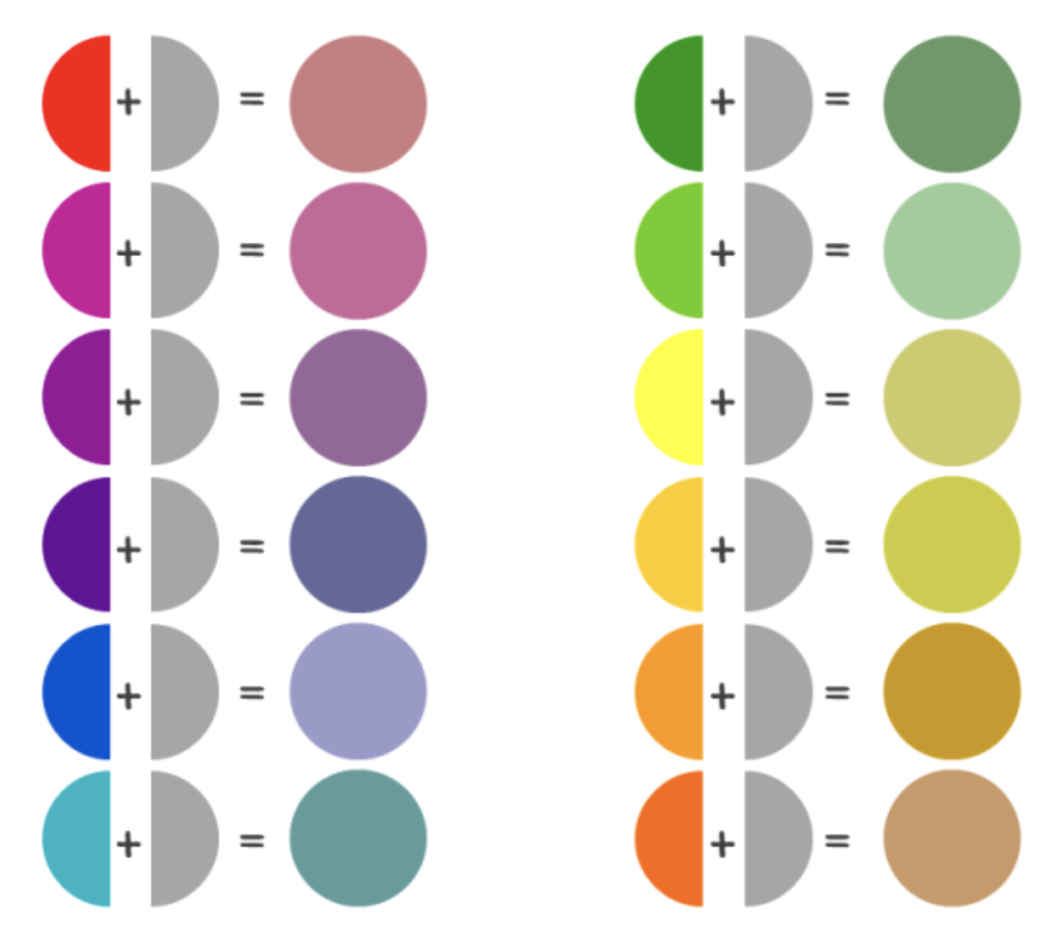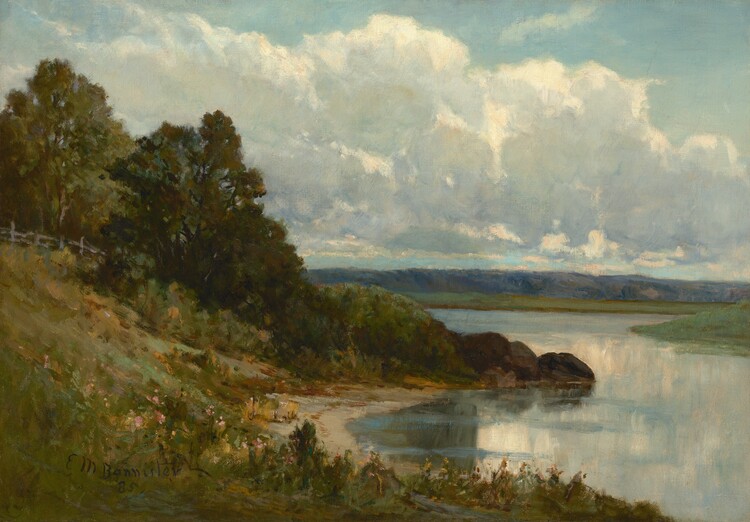Overview
Students will continue to add color as they develop their landscape drawing.
Materials and Tools
- Oil pastels
- Drawings from previous week
- Landscape reference images
Objectives
Students will understand that:
- Artists work from simple to more detailed.
- Artists work from light to dark.
Students will be able to:
- Hold their oil pastel in different ways to add large or small areas of color to their drawing.
- Identify and mix secondary colors, tints and shades observed in their reference images.
Activities
Introduce Tones
A tone is any color mixed with gray.

Model Adding Color to Landscape Drawing
Model identifying several tones in your reference image and mixing colors to match in your drawing.
Work Time:
As students use reference images and begin to create a landscape drawing, encourage them to:
- Use a light-colored oil pastel to lightly draw objects in the foreground.
- Continue to work back in space, lightly drawing the middle ground and background next.
- Start with the sky and work down the page.
- Use the side of oil pastels to add color.
- Use oil pastel techniques to mix, smudge, and blend colors, tints, shades, and tones.
Reflection
- Where do you see the most tints in your landscape?
- Where do you see the most shades?
- How do you plan to finish your drawing next class?
Resource
Edward Mitchell Bannister, Palmer River

